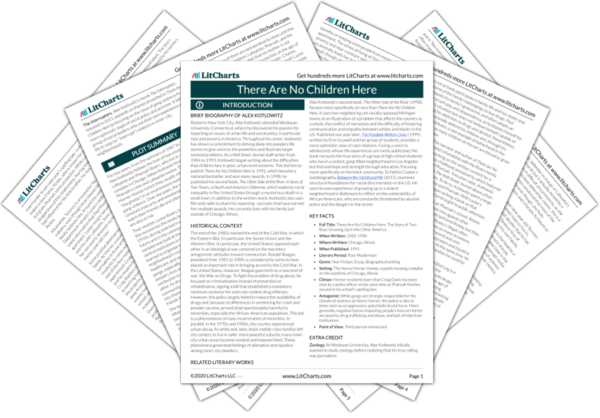Kotlowitz places LaJoe’s family situation in a larger context. In this way, her story functions as an expression of her personal choices and life experiences, but also as a reflection of large-scale, social and economic changes that have affected the neighborhood and other urban areas across the country. Broad social changes such as “white flight” (the migration of white families to suburbs) and economic decline have led to the current situation at Horner—and, therefore, have contributed to the current situation of the Rivers family. Individuals’ vulnerability to such large-scale, societal changes have generated resentment and a feeling of injustice among those who suffer from them most—here, Horner residents.
